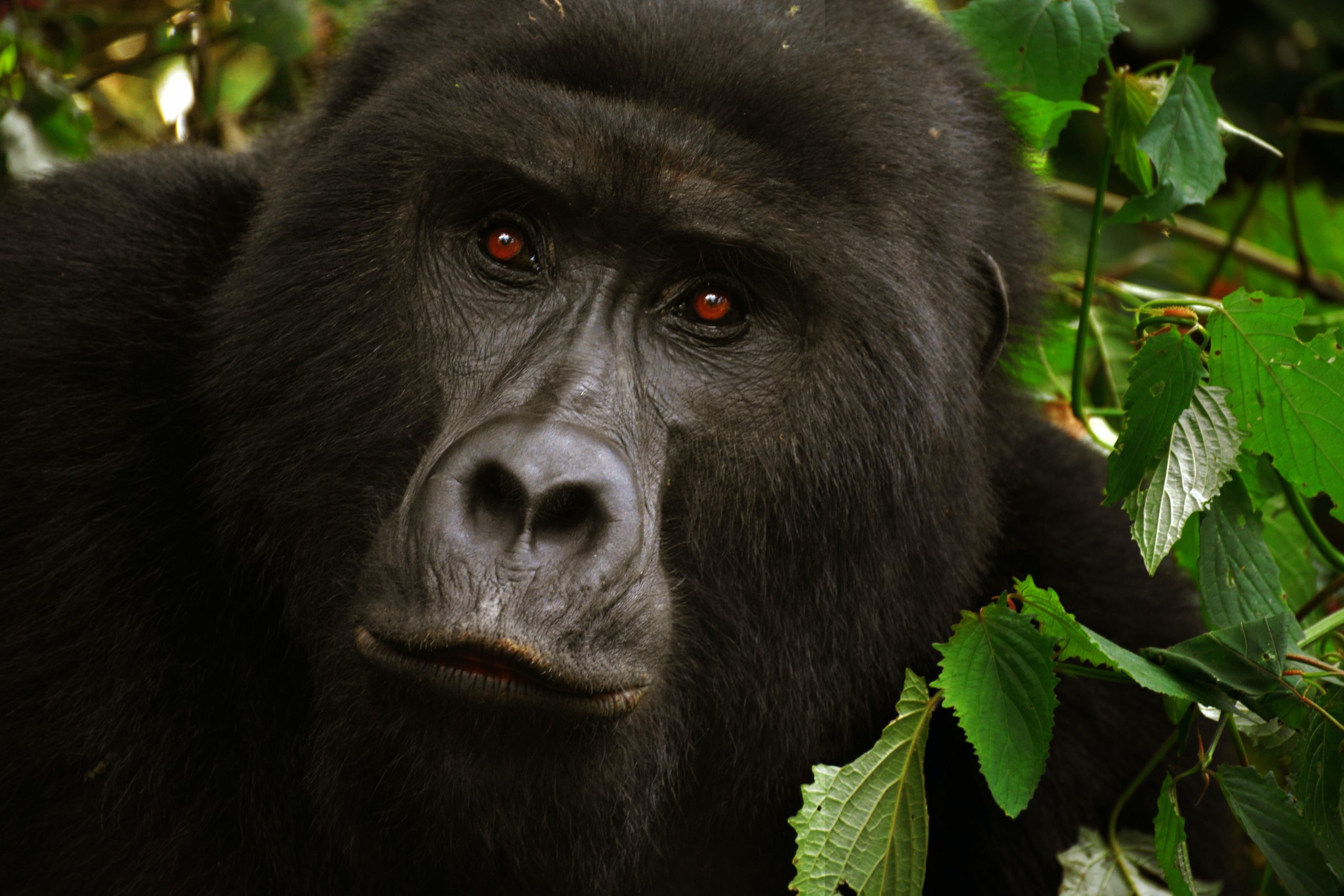A Gorilla Lecturing on Mr. Spurgeon

Charles Haddon Spurgeon was one of the most popular Baptist preacher of his time, maybe, the most popular Baptist preacher ever. Spurgeon was baptized at the age of 15 and when he was 19, four years after his baptism, he became the pastor of the New Park Street Chapel. At the time Spurgeon became the pastor of the church, New Park Street Chapel was the largest Baptist church in London.
In 1861 the church moved to a large, newly built building, the Metropolitan Tabernacle, which had a capacity for five thousand people. All of his sermons and lectures were transcribed and published every week. According to the Wikipedia, “by the time of his death in 1892, he had preached nearly 3,600 sermons and published 49 volumes of commentaries, sayings, anecdotes, illustrations and devotions.”
On October 1, 1861, Spurgeon gave, in the Tabernacle, a lecture which was destined to attract more public attention than any which he had previously delivered. It was entitled, “The Gorilla and the Land He Inhabits,” and was largely concerned with the volume, then recently published, and severely criticized–Explorations and Adventures in Equatorial Africa, by Paul B. Du Chaillu. The meeting was presided over by A. H. Layard, M.P. and by his side sat Mr. Du Chaillu, the author of the book.
In introducing Spurgeon’s lecture, two important things must be said. First, I have only introduced the section of the lecture in which Mr. Spurgeon talks about the gorilla. If you are interested in reading the lecture in its entirety, click here. Second, in his presentation, Mr. Spurgeon had a stuffed gorilla on the platform with him to which he pointed during the lecture.
It seems that the stuffed gorilla was the Koolookamba. The head of the Koolookamba on this post was taken from the Wikipedia. According to the Wikipedia, this is “the head of the kooloo-kamba Paul Du Chaillu shot in 1858.”
I include the head of the Koolookamba so that you may have an idea of what Spurgeon was talking about when he mentioned the gorilla.
The following is an excerpt from Spurgeon’s lecture about the gorilla:
Referring to the gorilla—a stuffed specimen of which was on the platform—Spurgeon said:
He is an enormous ape, which claims to approach the nearest to man of any other creature. How nearly he approaches, I leave you to judge. True, his claim to be our first cousin is disputed, on behalf of the koolo-kamba, by several very learned men. If we should, therefore, admit you (addressing the gorilla) to be man’s first cousin, we fear that the koolo-kamba might institute a suit at law to claim equal rights, and so many cousins would be far from convenient. Besides, I have heard that if we should admit this gentleman to be our cousin, there is Mr. Darwin, who at once is prepared to prove that our great-grandfather’s grandfather’s father–keep on for about a millennium or two–was a guinea-pig, and that we were ourselves originally descended from oysters, or seaweeds, or starfishes. Now, I demur to that on my own account. Any bearded gentleman here, who chooses to do so, may claim relationship with the oyster; and others may imagine that they are only developed gorillas, but I, for my own part, believe there is a great gulf fixed between us, so that they who would pass from us to you (again turning to the gorilla) cannot; neither can they come to us who would pass from thence. At the same time, I do not wish to hold an argument with the philosopher who thinks himself related to a gorilla; I do not care to claim the honour for myself, but anyone else is perfectly welcome to it.
Seriously, let us see to what depths men will descend in order to cast a slur upon the Book of God. It is too hard a thing to believe that God made man in His own image, but, forsooth, it is philosophical to hold that man is made in the image of a brute, and is the offspring of “laws of development.” O infidelity! thou art a hard master, and thy taxes on our faith are far more burdensome than those which Revelation has ever made. When we have more incredulity than superstition can employ, we may leap into infidel speculation, and find a fitting sphere for the largest powers of belief. But who can deny that there is a likeness between this animal and our own race? . . . There is, we must confess, a wonderful resemblance-so near that it is humiliating to us, and therefore, I hope, beneficial. But while there is such a humiliating likeness, what a difference there is! If there should ever be discovered an animal even more like man than this gorilla is; in fact, if there should be found the exact facsimile of man, but destitute of the living soul, the immortal spirit, we must still say that the distance between them is immeasurable.
When A. H. Layard introduced Mr. Spurgeon’s lecture, he said: “We are now to be entertained by Mr. Spurgeon’s lecture on the gorilla; but, in after ages— according to the development theory,—we shall doubtless have a gorilla lecturing on Mr. Spurgeon.”
Of course, the British Press took Layard’s quote and made a visual representation of a gorilla lecturing on Mr. Spurgeon.
A GORILLA LECTURING ON MR. SPURGEON
Claude Mariottini
Emeritus Professor of Old Testament
Northern Baptist Seminary
NOTE: Did you like this post? Do you think other people would like to read this post? Be sure to share this post on Facebook and share a link on Twitter or Tumblr so that others may enjoy reading it too!
I would love to hear from you! Let me know what you thought of this post by leaving a comment below. Be sure to like my page on Facebook, follow me on Twitter, follow me on Tumblr, Facebook, and subscribe to my blog to receive each post by email.
If you are looking for other series of studies on the Old Testament, visit the Archive section and you will find many studies that deal with a variety of topics.









